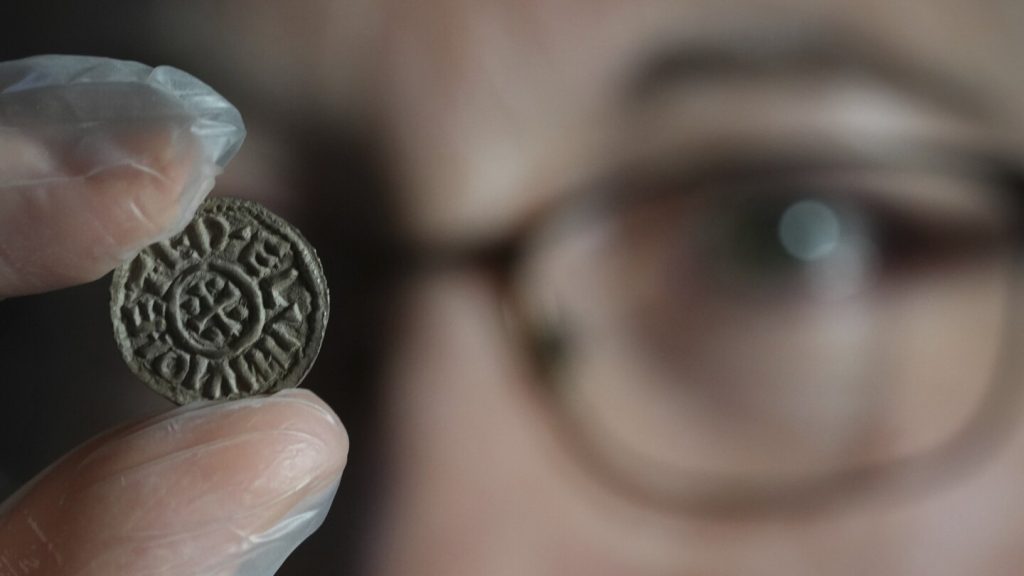The Significant Discovery: The Guthrum Penny
For Malcolm Weale, a 54-year-old detectorist from eastern England, finding a tiny, dirt-covered object in a field was a life-changing moment. As he carefully brushed away the dirt, he realized he was holding a silver penny minted during the reign of Guthrum, a Viking commander who later converted to Christianity and ruled eastern England in the ninth century as Athelstan II. The thrill of this discovery, which occurred shortly after he had binge-watched the series ‘Vikings’ on Netflix, left Weale trembling with excitement. He promptly took the coin to the British Museum, where it was displayed alongside other remarkable finds from 2023 and 2024. This coin is not just a rare artifact; it is the first silver coin minted by a Viking ruler in Britain, offering a unique glimpse into the historical significance of Viking rule and the transition of eastern England during that period.
The Portable Antiquities Scheme: A Gateway to History
Weale’s discovery was part of the Portable Antiquities Scheme, a government-funded project that records thousands of archaeological finds made by the public each year. The scheme not only helps preserve history but also engages ordinary people in the process of uncovering it. The annual report released by the British Museum in 2024 highlighted several other notable discoveries, including a set of 3,000-year-old bronze metalworkers’ tools, a seventh-century gold and garnet necklace, and a gold signet ring with a connection to Queen Elizabeth I. Each of these finds adds a new layer to the rich tapestry of British history, revealing the craftsmanship, trade routes, and cultural practices of past eras. For Weale, who was introduced to metal detecting at the age of 7 and has been hooked ever since, the thrill of discovery is an unparalleled reward, far more valuable than any financial gain.
Global Connections in Anglo-Saxon Craftsmanship
One of the most intriguing finds was the seventh-century gold and garnet necklace discovered in Lincolnshire, central England. Archaeologist Helen Geake, who serves as a "finds liaison officer" for the Portable Antiquities Scheme, explained that while the necklace was likely made by English craftsmen—esteemed as some of the best in Europe during that time—the garnets themselves originated from Sri Lanka. This revelation underscores the extensive trade networks and global connections that existed even in the early medieval period. The necklace’s exquisite workmanship and the use of distant materials highlight the sophistication and cultural exchange that characterized Anglo-Saxon society, providing a tangible link to the broader world of that time.
A Signet Ring and Its Royal Connections
Andy Akroyd, another enthusiastic detectorist from Bedfordshire, central England, had a discovery that was equally compelling. While out metal detecting, he initially thought he had found a coin, but upon closer inspection, it turned out to be a 16th-century signet ring engraved with a phoenix. The phoenix, a mythical bird symbolizing rebirth, was closely associated with Queen Elizabeth I. Akroyd’s find was recovered from a location that was once a royal hunting ground during Elizabethan times, suggesting that the ring was likely worn and lost by one of the queen’s supporters. This discovery is not only a testament to the precision and skill of 16th-century metalwork but also a personal connection to the era of one of Britain’s most iconic monarchs. The ongoing journey of discovery, from the initial find to the unraveling of its historical context, is a thrilling and profound experience for amateur history hunters like Akroyd.
The Rewards and Challenges of Metal Detecting
While the financial rewards of such discoveries can be significant—last year, a hoard of 1,000-year-old coins found in southwest England sold for £4.3 million ($5.3 million)—the vast majority of detectorists are in it for the thrill and connection to history. Both Weale and Akroyd emphasize the mental health benefits of their hobby. Weale finds that when he is out detecting, his mind is completely immersed in the past, contemplating the lives and times of kings and queens. He often forgets about everyday worries and even his basic needs, sometimes skipping meals. Akroyd, who lost his father in the past year, uses his time in the field as a way to connect with his late parent, imagining conversations and seeking guidance from the spirit of his dad. The methodical, slow-paced nature of metal detecting offers a peaceful and meditative escape, making it a hobby that is both intellectually stimulating and emotionally fulfilling.
Continuation and Dedication
Despite the physical challenges and often harsh weather conditions of their hobby, Weale and Akroyd are undeterred. They know that the best finds often come when the weather is at its worst, a testament to their dedication and the serendipitous nature of archaeology. Weale’s passion for history and his love for the outdoors keep him tramping through fields and forests, rain or shine. Akroyd, too, remains committed, finding solace and inspiration in the natural landscapes and the artifacts they yield. Their stories are a reminder that history is not just about the past; it is a living, breathing entity that can be discovered and reconnected with in the most unexpected ways, enriching our understanding of who we are and where we come from. For them, the journey of discovery is a continuous and deeply personal one, filled with the promise of more incredible finds and the joy of contributing to the preservation of our shared heritage.












